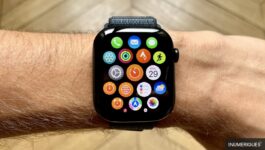
The Apple Watch Series 10 could improve the screen of the next iPhones, why?
Amazfit Bip 5 Unity
Note The Digitals

How the pricing table works
Turn off your ad blocker to access all of the links above.
Xiaomi Redmi Watch 4
Introductory price €99
Note The Digitals

How the pricing table works
Turn off your ad blocker to access all of the links above.
Simply put, LTPO is a backlight technology that dynamically adjusts the refresh rate of OLED displays based on the content displayed to save battery while providing a smooth viewing experience.
LTPO3 screens for future iPhones?
LTPO3 paves the way for even higher refresh rates than the 120Hz mark of LTPO2. We're talking about smoother animations, reduced motion blur and a more responsive interface.
Since this technology has been integrated into the Apple Watch Series 10 connected watch, some are speculating about its presence in future iPhones, notably the iPhone 17 whose Pro and Air versions have shared some information. Which would mean a significant improvement to the ProMotion display and, why not, a 240Hz refresh rate?
However, the Californian company will have to find a way to exploit such a high refresh rate since 240 Hz sounds useless. For example, playing video games at frequency above 120 fps.
Remember that Samsung Display would be working on OLED LTPO screens for the Apple Watch 11 connected watch – but also for the iPhone SE 4. Interestingly since so far the Korean company that is preparing its Galaxy S25 has never played a big role in the design of the panels of the smartwatch range.
The Cupertino company is generally not the first to adopt new technology, as evidenced by its Apple Intelligence. We had to wait until the iPhone 13 Pro to introduce screens refreshed at 120 Hz while the standard versions remain at 60 Hz.





